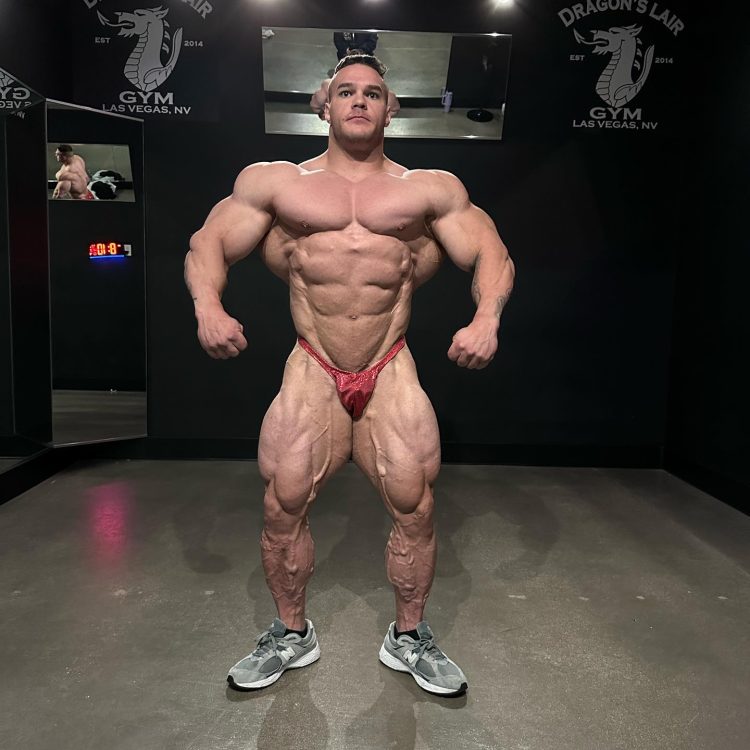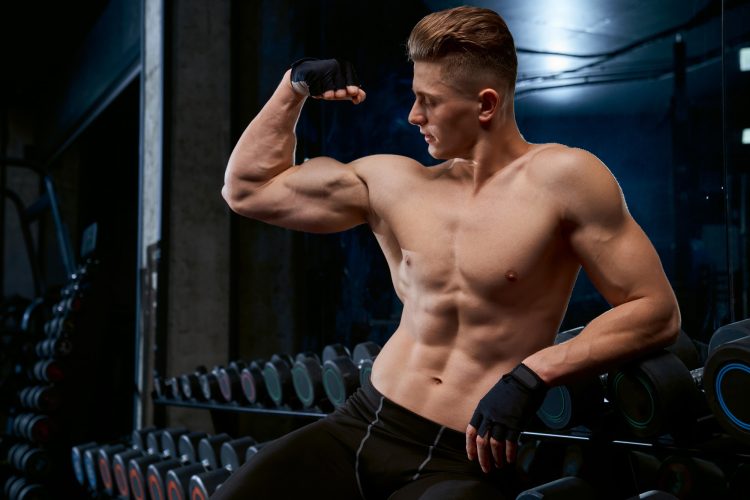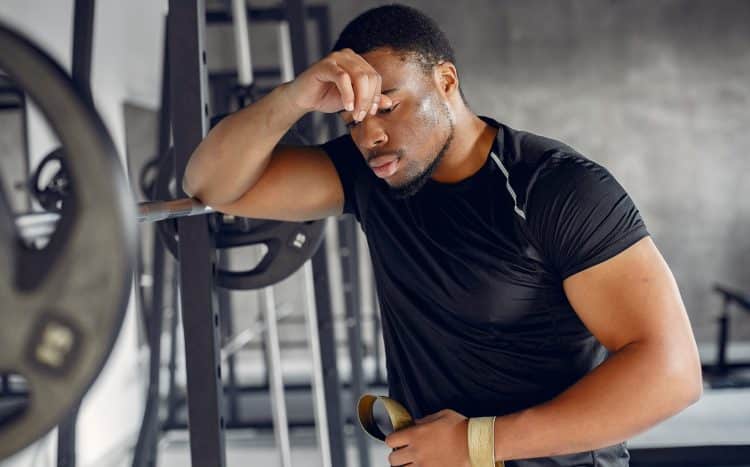Most people think about bodybuilding and imagine muscular men curling heavy weights.
This assumption is correct to some extent. As you get stronger, you must lift progressively heavier weights to stimulate muscle tissue and growth. However, lifting heavy and lifting recklessly are two different things.
As a personal trainer with seven years in the trenches, I have seen many people cut their lifting careers short by lifting more than they could safely handle.
Remember, one of the tenets of bodybuilding is to improve longevity. It’s called body-building for a reason. Careless lifting that leads to injuries is body-destroying.
The allure of short-term gains via unsustainable methods might be tempting, but they do more harm than good.
Lifting weights for an extended period can lead to joint wear and tear, tight tendons, and nagging aches and pains. Training for longevity in bodybuilding involves prioritizing healthy movement patterns, joint-friendly exercises, and strategic programming.
Level Up Your Fitness: Join our 💪 strong community in Fitness Volt Newsletter. Get daily inspiration, expert-backed workouts, nutrition tips, the latest in strength sports, and the support you need to reach your goals. Subscribe for free!
In this article, I’ll uncover how to optimize your workouts and avoid injuries for sustained progress. I’ll also touch upon the training secrets for a long, healthy, and successful lifting career.
Principles of Longevity Training
Building muscle and strength can take a long time. You must internalize the following principles to stay in the game for an extended period:
Prioritize Form Over Ego
Have you ever seen those older super-fit folks still killing it in the gym? Those are my eternal source of motivation.
However, to train for such an extended period, you have to make some significant adjustments to your training. The first of these will be to swallow your pride. Lifting heavy might make you look like a total badass in the gym, but it takes its toll on the body. You might not feel it in your younger years, but the heavier weights will eventually catch up to you.
Use weights that allow you to perform an exercise with a picture-perfect form.
A study published in Sports (Basel) found that a moderate repetition scheme with moderate loads (from 8 to 12 repetitions per set with 60% to 80% of 1RM) optimizes hypertrophic gains. (1)
Drill the movement mechanics of an exercise before progressing to heavier weights.
Once you feel like you’ve mastered the form, film yourself doing the exercise and get a professional to analyze your form. Sometimes, the difference between suboptimal and maximal gains is a minor form tweak.
My personal training clients rave about the muscle pumps they feel after I make small adjustments to their bench press technique.
Pro Tip: I recommend using a slow rep cadence to fire up your muscle fibers. My go-to is the 3-1-1-2 scheme, which involves spending 3 seconds on the eccentric phase, 1 second each in the fully stretched position and on the concentric phase, and 2 seconds in the fully shortened position.
Progressive Overload
Progressive overload is the name of the game if you want to build strength or muscle mass. It involves progressively challenging your muscles with more volume to make consistent gains.
Contrary to what most people think, you don’t always need to lift heavier weights to overload the target muscles. You can do it by performing more reps and sets and introducing advanced training principles like supersets, dropsets, intraset stretching, and BFR into your training.
Programming progressive overload into your training can help avoid hitting plateaus.
But remember, doing too much too soon can be disastrous for your longevity. Make the smallest increments possible to give your muscles enough time to adjust to the new load. You want to surprise the muscles and not destroy them.
Pro Tip: Beginners should progressively overload their muscles by shortening their rest time between sets. For instance, if you usually spend 90 seconds resting between sets, lower it to 60 seconds of recovery time.
Deload Periods
I’ll let you in on a secret. Even professional bodybuilders don’t train heavy for 52 straight weeks.
Pushing yourself too hard without allowing your body time to rest and recuperate is a recipe for disaster. After completing an eight or 12-week high-volume program, you must give yourself one to two weeks to recover from the carnage.
Deload weeks are a period of reduced training stress designed to mitigate physiological and psychological fatigue, promote recovery, and enhance preparedness for subsequent training. (2)
The right time to execute a deload week will depend on your training regimen. More advanced exercisers might need a deload week every four to eight weeks, whereas beginners can wait a little longer.
I highly recommend working with an experienced personal trainer to develop a personalized training program to optimize performance and recovery.
Check Out: Arnold Schwarzenegger’s Timeless Bodybuilding Advice For Building Muscle and Strength
Listen To Your Body
You must learn to listen to your body if you aim to lift weights for a long time.
A little discomfort is expected while you’re trying to build muscle. However, if you’re experiencing chronic pain, it might be time to talk to a doctor. You must push yourself out of your comfort zone, but you shouldn’t be punishing yourself.
Learn to differentiate between a burn caused by lactic acid buildup in the muscle tissue versus muscle, tissue, tendon, or ligament pains.
You must dismiss the urge to keep going if you feel a sharp ache or pain during a set. Anything you do after this point will likely make the condition worse. Discontinue your workout immediately and seek medical attention.
Joint-Friendly Training Strategies
Training for longevity in bodybuilding requires you to make certain changes to your regimen. Here is the blueprint you must follow:
Movement Variety
Sticking to the same exercises for an eternity will not only lead to a plateau but will also strain your joints, tendons, and ligaments due to overuse.
You might build a barrel chest performing four sets of 10 reps of 225-pound bench presses each week, but your shoulder rotator cuffs might tell a different story. Depending on your body mechanics, some exercises might cause more joint and tendon strain than others.
Mixing up the exercises will add variety to your training regimen, train your muscles from different angles, ensure overall development, and spread the workload, giving the joints a chance to recover between exercises.
Be Mindful While Performing Compound Lifts
Multi-joint exercises like squats, deadlifts, and bench presses are excellent for building strength and muscle mass.
However, many lifters tend to use heavier weights on these exercises than what their body can handle. This usually hampers their training form, significantly increasing the risk of injury and developing strength and muscle imbalances.
You don’t need to eliminate compound lifts from your exercise program. Instead, ensure that you’re using the proper training technique.
Furthermore, whenever you feel like your form is starting to break during a set, lower the weights so you can stick to the correct technique.
Each individual responds to an exercise differently. Some lifters might feel the incline bench press at a slight angle targets the chest more effectively than the flat bench press while significantly limiting shoulder rotator cuff strain.
Accessory Work
This is especially important for folks who are into powerlifting or Olympic weightlifting and primarily perform a handful of exercises.
Accessory exercises are incredibly effective for developing supporting muscle groups and fixing muscle and strength imbalances that can improve training longevity. Your accessory work should be a mix of compound and isolation exercises.
Don’t confuse accessory lifts with optional lifts, as they are vital for reducing injury risk, which can derail your bodybuilding journey.
Warm-Up and Cool-Downs
The role of mobility is often overlooked in bodybuilding, which increases the risk of injuries and muscle strain during training.
Level Up Your Fitness: Join our 💪 strong community in Fitness Volt Newsletter. Get daily inspiration, expert-backed workouts, nutrition tips, the latest in strength sports, and the support you need to reach your goals. Subscribe for free!
Spending 5-10 minutes to warm up and 5-10 minutes to cool down should be non-negotiable in your training regime.
The warm-up routine should consist of dynamic stretches and light cardio to loosen up the muscles and get the blood flowing. Dynamic stretches involve actively moving the joints, muscles, tendons, and ligaments throughout the full range of motion.
On the flip side, you must perform a 5 to 10-minute cool-down comprising static stretches to flush the lactic acid out of the muscles. Static stretches involve holding a stretch for a particular period.
Recovery is Your Biggest Muscle
When most beginners start their bodybuilding journey, they think they need to camp inside the gym to build muscle, and the amount of time they spend lifting weights is directly proportional to muscle and strength gains.
As a veteran personal trainer who has worked with elite athletes, I can tell you that the real transformation happens when you are outside the gym.
You break down muscle tissue when you are exercising. Your muscles grow back bigger and stronger when you are recovering.
Here is how to optimize recovery for longevity in bodybuilding:
Sleep For 7-8 Hours
Sleep is where the magic happens.
You must get between seven to eight hours of quality sleep to maximize your recovery potential. Sleep is when your muscle tissues repair and your body regulates hormone levels essential for building muscle, such as testosterone and growth hormone. (3)
Skimping on sleep can result in slower muscle growth, increased muscle breakdown, poorer workouts, and a higher risk of injury.

Eat a Nutrient-Dense Diet
As an old bodybuilding adage puts it — “You cannot out-train a bad diet.”
You must eat a balance of carbs, protein, and fats to meet your daily macronutrient goals. Eat roughly 1 gram of protein per pound of body weight to ensure you have enough mortar to rebuild stronger and bigger muscle tissues.
On the other hand, you must consume a balance of complex carbs and healthy fats.
You must also focus on eating anti-inflammatory foods like fruits and green vegetables to boost your recovery. Adding ginger and turmeric to your foods is a great place to start.
Drink at least a gallon of water each day to boost your recovery. Water is vital for delivering nutrients to the muscles and washing out the waste. Dehydration can increase muscle inflammation and slow down your recovery.
Pro Tip: Beginners can aim for a 40:30:30 (carbs, protein, and fats) macronutrient split. You can adjust the ratio as you gain more insights into how your body responds to different foods.
Stress Management
Stress is recovery’s biggest rival.
Your body releases cortisol when you are stressed, which can hamper your testosterone levels. Journaling, exercising, meditation, and taking long walks have been known to lower stress levels.
I encourage consulting a healthcare professional if you don’t see an improvement in your stress levels after following these four techniques.
Active Recovery
In contrast to the popular opinion, ‘rest days’ don’t translate to ‘lazy days.’
To maintain a high metabolic rate, you must keep your body moving every day of the week, including the rest days. High metabolic rates ensure you burn calories throughout the day, even when you are not physically active.
I recommend my clients do mobility work or yoga on the rest days to improve blood flow and reduce soreness.
Self-myofascial release using a foam roller and static stretches can also improve your range of motion, which can boost your longevity in bodybuilding.
One of the Most Common Recovery Strategies
It’s not uncommon to experience muscle sprains or strains while lifting weights, especially when you progress to a more advanced level.
The RICE method is one of the most effective ways to nurse a minor gym injury. It involves:
- Rest: Take a few days off training to allow your body time to recover.
- Ice: Apply ice packs to the trouble area to reduce pain and swelling. Avoid applying ice directly to the skin.
- Compression: Wrap the area with an elastic bandage to limit swelling. Ensure that the wrapping isn’t so tight that it obstructs blood flow.
- Elevation: Keep the injured body part raised above the heart level to limit swelling. You might have to lie down for this.
The Mindset of Longevity
Achieving longevity in bodybuilding requires a mindset shift. Here are some of the mindset principles that you must internalize:
Patience and Self-Compassion
Avoid the now-or-never mentality if you desire longevity.
Building a chiseled Greek god physique can take years of hard work, dedication, and commitment. Training to muscle failure using the heaviest weights you can handle might help you get to your physique, but it is only a matter of time before the weights take a toll on your joints, tendons, and ligaments.
Building an aesthetic physique is a marathon and not a sprint.
Focus on making gradual progress in each training session. Let your gains compound over time, and you’ll be surprised to see that you don’t need to go as you had imagined to sustain your progress.

For Competitive Bodybuilders
Longevity for competitive bodybuilders is a subject of its own.
Many competitive bodybuilders, especially at the pro level, use PEDs (performing enhancing drugs), which can negatively impact longevity.
Lifters who aspire to compete should do so with a final objective (or a deadline in mind). They should then work with a medical professional to ensure their health markers return to normal/healthy levels.
Seek Help and Support
Bodybuilding can be a loner sport. However, it doesn’t have to be this way.
Many people give up training before achieving their goals as they feel alone on the journey and soon lose the motivation to transform their physique.
You must surround yourself with people who share your passion and are on the same journey as you. Begin by finding a training partner in your gym. Your training partner should ideally have the same experience and fitness level as you.
You could also join online communities to share your progress and seek advice. This also helps keep you accountable and can motivate you to work toward your goals.
Introverts can hire a personal trainer or share their progress with friends and family to monitor their improvements and keep them accountable.
Embrace Changes
Remember, the human body is ever-evolving.
You shouldn’t expect to look and feel the same way in your 50s as you did in your 20s. For instance, recovering from a hamstring sprain might take you four to five weeks in your 50s, although it might not take more than a week in your 20s.
Similarly, your rate of muscle gain slows down as you age, and your testosterone levels drop naturally.
However, you shouldn’t get discouraged by this.
Longevity is all about adapting to new circumstances. You must constantly assess your fitness levels and goals and adjust them realistically.
Conclusion
Reckless training can result in injuries, which can hamper your gains and lead to mental frustration. You must adopt a proactive approach to training involving mobility training, deload weeks, and listening to your body to boost longevity.
Remember, bodybuilding isn’t about an all-or-nothing mentality. You can’t build your dream physique in just one workout. You must slowly but consistently chip away at the workouts to move the needle in the right direction.
If you have any questions about training for longevity, drop them in the comments below, and I’d love to help!
References
- Schoenfeld BJ, Grgic J, Van Every DW, Plotkin DL. Loading Recommendations for Muscle Strength, Hypertrophy, and Local Endurance: A Re-Examination of the Repetition Continuum. Sports (Basel). 2021;9(2):32. Published 2021 Feb 22. doi:10.3390/sports9020032
- Bell L, Strafford BW, Coleman M, Androulakis Korakakis P, Nolan D. Integrating Deloading into Strength and Physique Sports Training Programmes: An International Delphi Consensus Approach. Sports Med Open. 2023;9(1):87. Published 2023 Sep 21. doi:10.1186/s40798-023-00633-0
- Charest J, Grandner MA. Sleep and Athletic Performance: Impacts on Physical Performance, Mental Performance, Injury Risk and Recovery, and Mental Health. Sleep Med Clin. 2020;15(1):41-57. doi:10.1016/j.jsmc.2019.11.005












